
Walking around Bilbao will take you to wonderful places that will surprise you, such as this neighborhood, the Basque Notting Hill. Its colourful houses outstand among the traditional architecture of its old town and the sophisticated buildings of modern Bilbao, like the Guggenheim Museum or Torre Iberdrola. This place is not only special for its picturesque appearance, but also for its history.
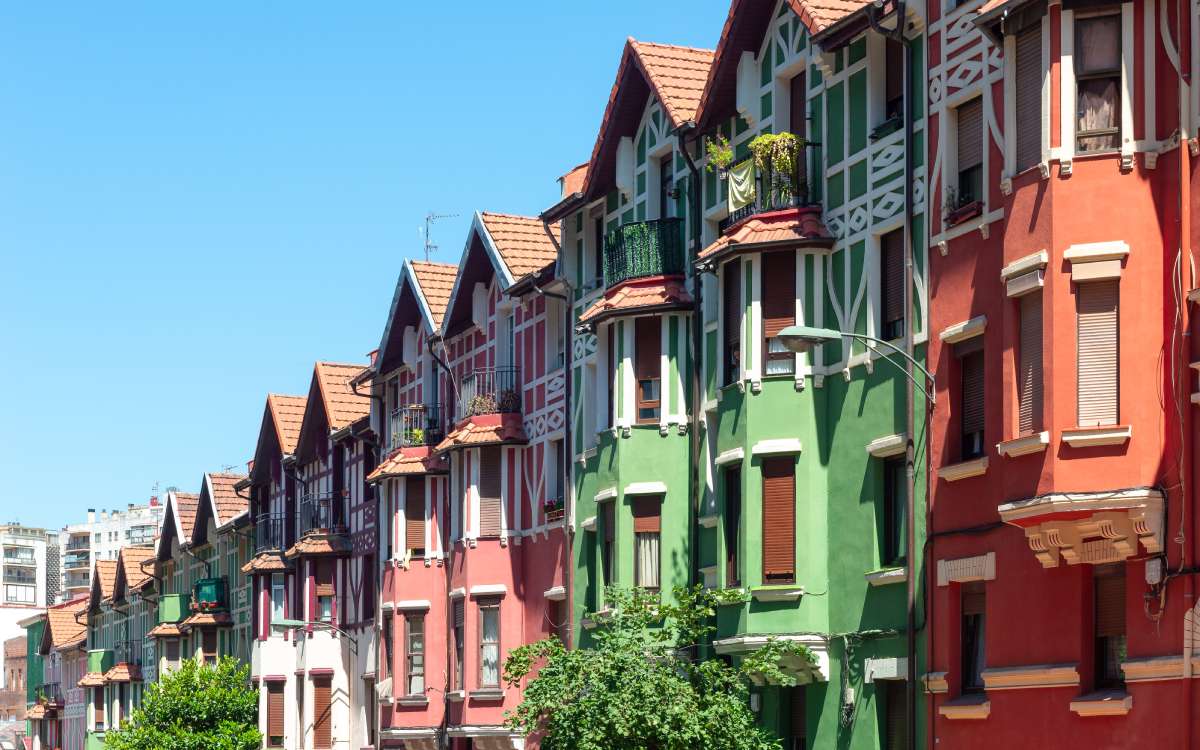
Bilbao’s Notting Hill. | Shutterstock
You won’t need to walk far to get to this quarter that reminds everyone of a movie setting and doesn’t seem like a northern Spanish residential area. Iralabarri is a explosion of colour, a row of green, orange, yellow, and blue façades that take every visitor to the London neighbourhood it is compared with.
These façades belong to centenarian townhouses that have survived speculative urbanism. Most of them succumbed in the 1970s and 1980s, but those that are still in place create one of the less popular corners of Bilbao, one of the most photogenic and charming as well.
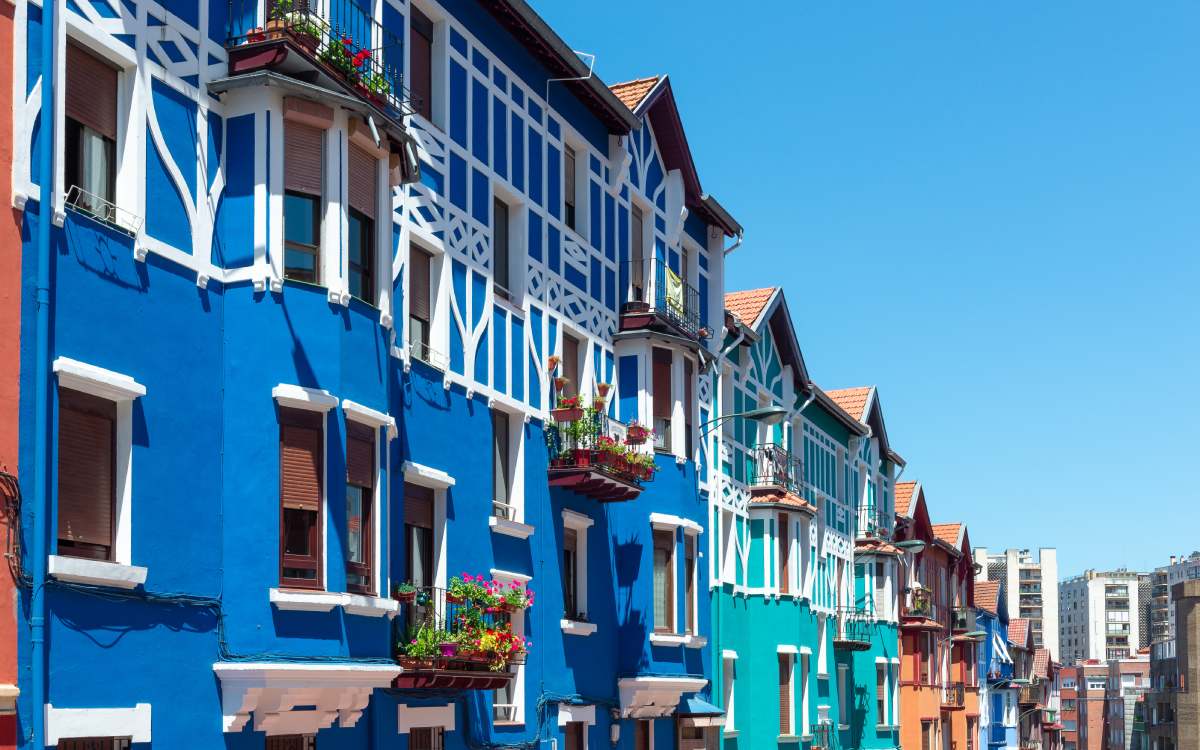
Iralabarri. | Shutterstock
These rows scatter throughout three streets, especially: Baiona, Kirikiño and Zuberoa. Their architecture obviously reminds of Anglo-Saxon buildings. However, it won’t be long before you find the influences of traditional Basque architecture and a few Modernist details that belong to the times when they were built.
These houses were built to accommodate workers of the local bread industry. The architects Federico de Ugalde and Enrique Epalza designed modern houses that are equipped with two or three bedrooms, one living room, one kitchen, and one bathroom behind these picturesque façades. They were extremely luxurious for the working class of the early 20th century.
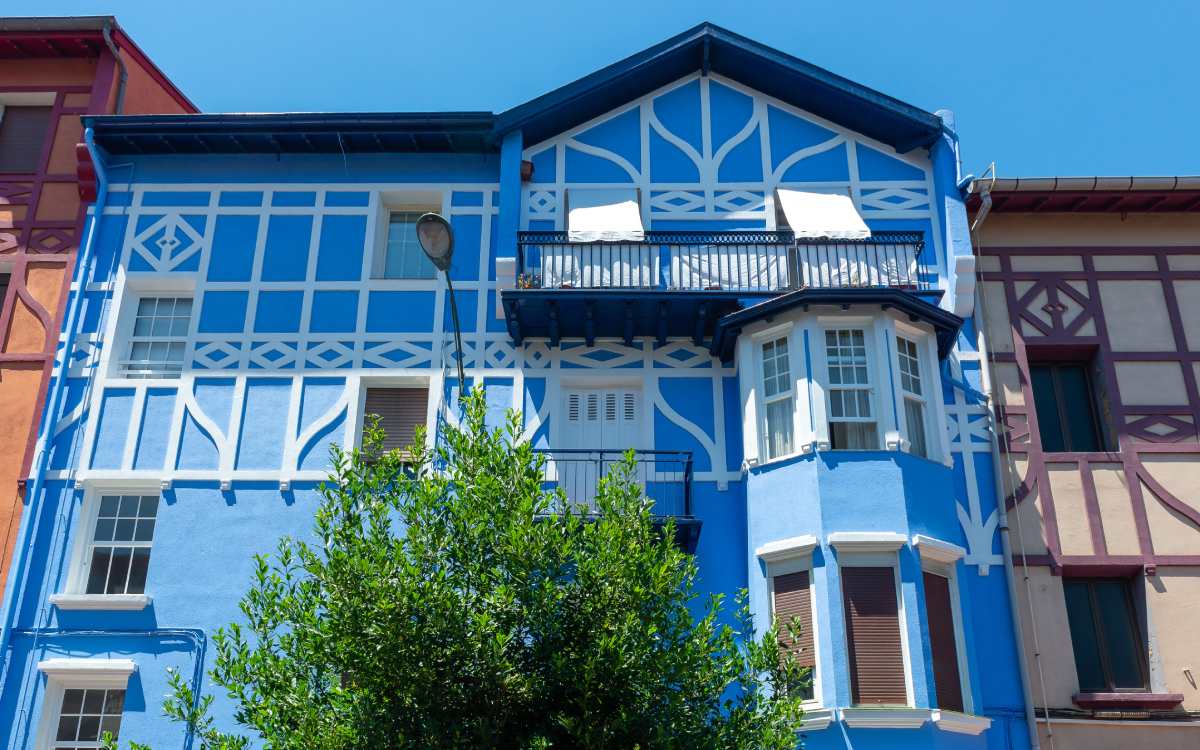
Iralabarri. | Shutterstock
The story of this place is as singular as its appearance. Juan José Irala is its main character. This employer created a bakery that rapidly flourished, which led to the construction of the Harino-Panadera factory years later. He provided the most recent machines at the time and turned the factory into the best factory in Spain.
The factory needed workers. And those workers needed suitable housing in accordance with the social hygiene movement of the era, which advocated for the environmental health of the cities and more decent life conditions for their citizens. In this regard, Irala bought the lots near the factory and founded the Sociedad Anónima Inmobiliaria.
Just 10 years later, in 1916, the neighbourhood had come to life. This neighbourhood covered 15 streets and around 3,000 people lived on it in 1920. The factory workers didn’t have to travel to work and could live in decent houses that were cheaper than those in the city.
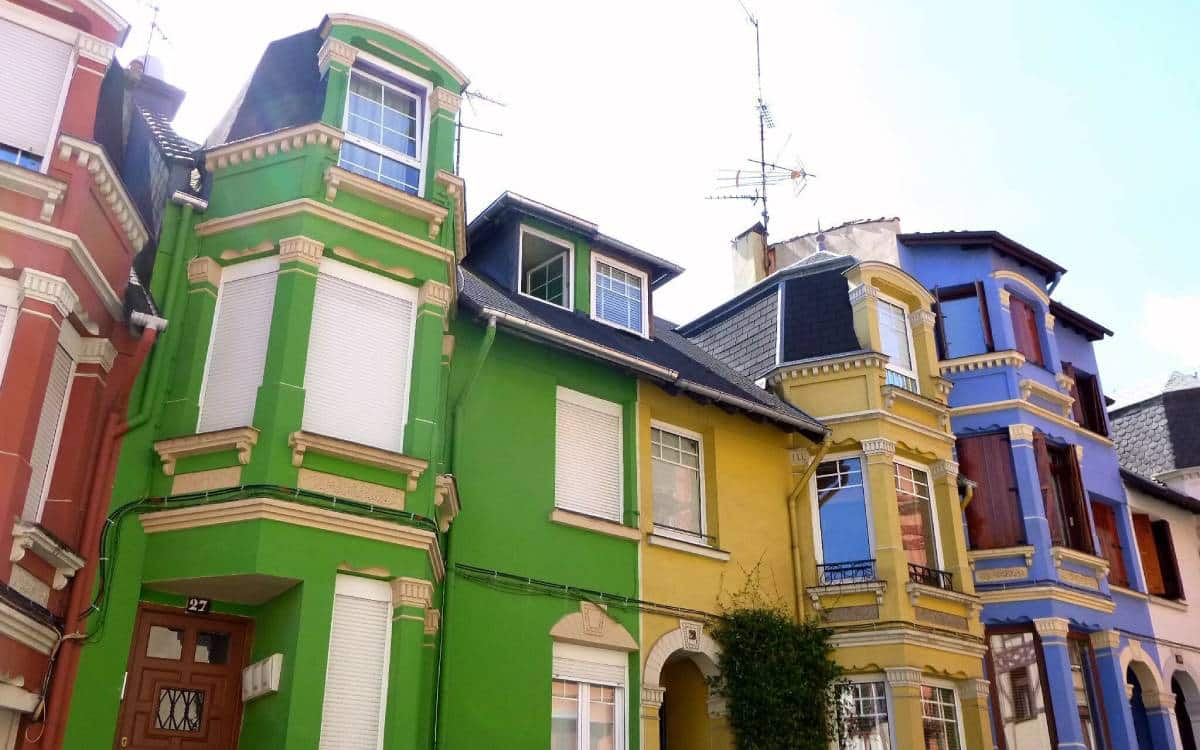
Houses of this colourful neighbourhood in Bilbao. | Wikimedia
However, Irala’s project was more ambitious than just a few residential blocks and townhouses with gardens and urban orchards. He actually included a whole service network in his construction plans, which included schools, social centres, a church, supermarkets, and its own tramway.
More than one hundred years have passed, and Iralabarri is still one of Spain’s most colourful quarters, but it has changed a lot. While it doesn’t smell like freshly baked bread anymore, most of its citizens are still working class. Although its population has increased, some of its original buildings have been replaced with more modern ones that lack Iralabarri’s original essence.
The big city extinguished Irala’s shine, and it remained in the dark for a few decades, barely remembered. But the peculiar image of the rainbow painted by its façades and social media are bringing life back to it. In fact, it is one of the many tourist attractions hidden in the city of Bilbao.
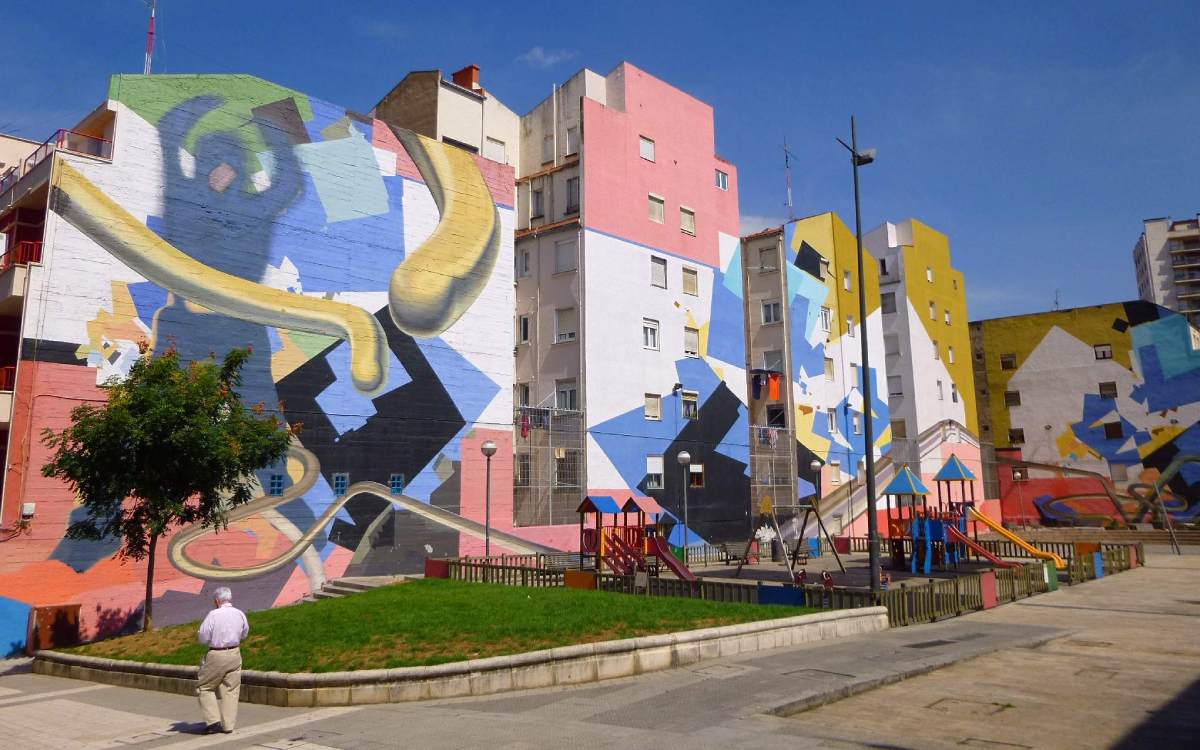
Kirikiño Avenue, Iralabarri. | Wikimedia
The neighbourhood of Irala rises high on the left side of Ría de Bilbao, only a few kilometres away from the city centre. This quarter of steep streets must be visited slowly. Calm is necessary to get lost in every little detail and really dive into its history and an essence that can be perceive even now.
Actually, Iralabarri is more than its vibrant façades that remind of British constructions. It has plenty of mural paintings that showcase the best of urban art. It houses many traditional taverns where you should enjoy a pintxo or a tapa. And, although the bread that led to the birth of this place isn’t made anymore, one of the buildings of the old bread factory is still in place today—the mill. This concrete building still shelters a large part of the original machinery that was used for making flour for many years.
In the neighbourhood of Miribilla, not very far from Iralabarri, you can take a look at some of the buildings of that more modern Bilbao. On one hand, you can see Bilbao Arena, one of the most avant-garde sports centres in Spain. On the other, you will find Frontón Bizkaia, temple of an extremely popular Basque sport, the pelota mano.
You can also read this article in Spanish here.